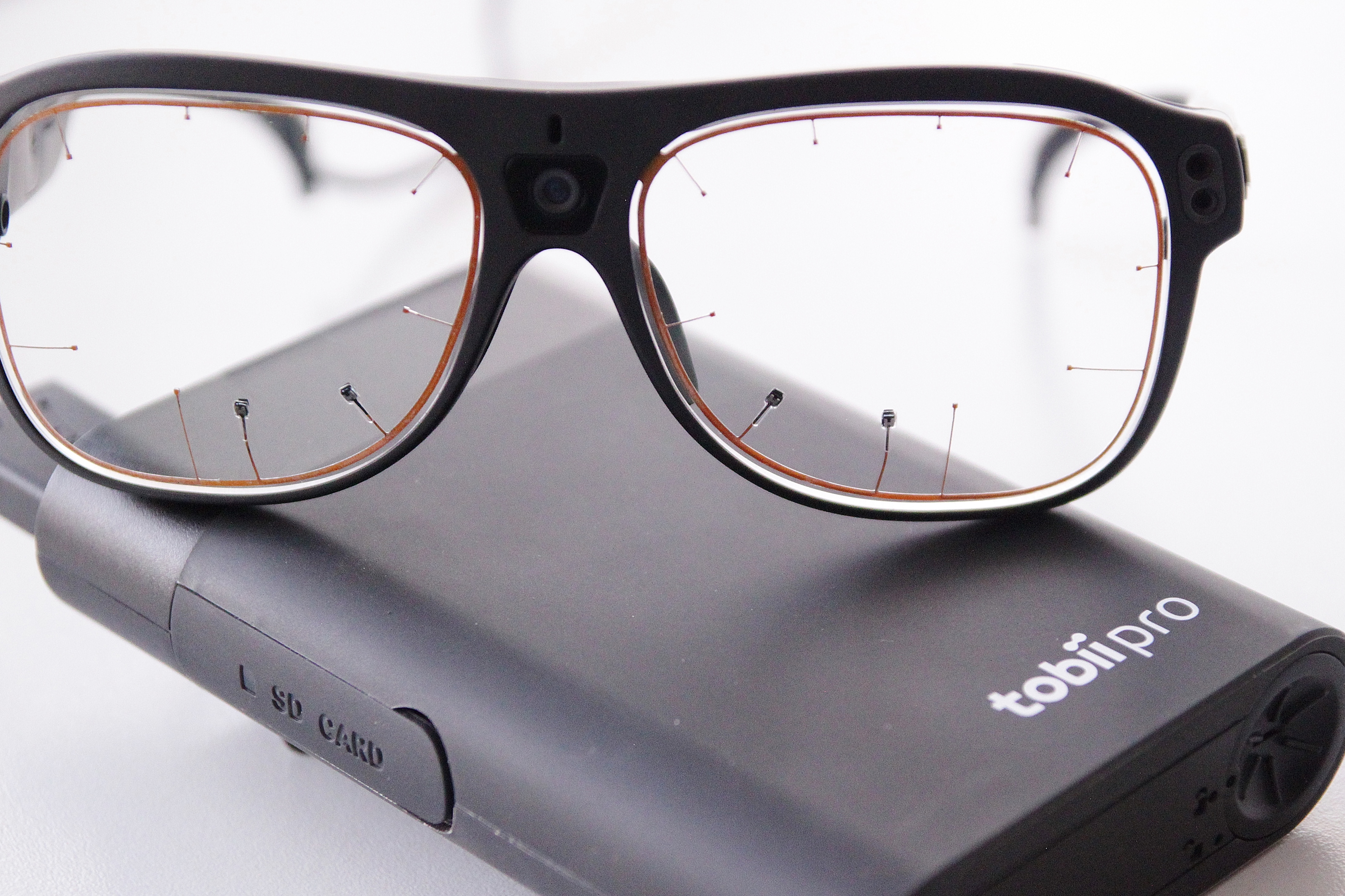01 June 2021
|
Story Leonie Bolleurs
|
Photo Prof Pieter Blignaut
 The newly acquired eye tracker in the Sensory Laboratory at the UFS not only places the laboratory in a unique position to its competitors, but it also adds value to the services offered by the laboratory.
The newly acquired eye tracker in the Sensory Laboratory at the UFS not only places the laboratory in a unique position to its competitors, but it also adds value to the services offered by the laboratory.
Some role players in the food industry believe the Sensory Laboratory at the University of the Free State (UFS) to be world-class. This is feedback received from companies that have recently visited and have first-hand experience of the services offered by the laboratory, situated in the
Department of Sustainable Food Systems and Development.
According to
Dr Carina Bothma, Senior Lecturer and sensory science expert from the same department, the laboratory performs sensory analysis, which is a scientific discipline used to evoke reactions from humans regarding the five senses of sight, smell, touch, taste, and hearing. These reactions can be captured from first bite to complete mastication and are then statistically analysed and interpreted by a sensory analyst.
New state-of-the-art equipment
The latest additions to the sensory laboratory, the
Tobii Pro Nano and
Tobii Pro Glasses 3 eye trackers, are of great value – not only to the department, but also to the industry. The laboratory received the equipment in April this year.
The eye tracker, which can, among other things, measure computer interaction in consumer environments, is placing the UFS sensory laboratory at a completely different level than their competitors when it comes to profiling and comparing food products.
He explains: “In an eye-tracking study with a sample of consumers, the eye activity is recorded with an eye tracker and a webcam with a built-in microphone to capture participants’ facial expressions and think-aloud to stimuli that are presented as, for example, advertisements on websites, television commercials, magazines and newspapers, and shelf displays.”
“The eye tracker will indicate where a person looked and what he overlooked. It will establish whether the person saw a specific advertisement, how much time he spent reading it, whether he saw the product name, and if he read the fine print in the advert.”
“The tracker then also provides access to raw data with various export and data filtering options. The resulting data can be statistically analysed and graphically rendered to provide evidence of specific visual patterns.”
The equipment is placing the university at the forefront of using digital technology in the analysis of consumer behaviour to help make food systems sustainable. – Prof Johan van Niekerk
In terms of marketing food products, the eye tracker is very helpful in analysing consumer behaviour, because it is based on unconscious behaviour. One cannot manipulate one’s eye movements, believes
Linda Marais-Lombard, sensory science assistant in the laboratory.
Marais-Lombard says there are endless possibilities with eye tracking. “Some of the applications include capturing visual patterns that consumers follow when they look at a product, packaging, marketing materials, or a webpage. The patterns can be used to adjust the layout so that the most important information is placed in the positions that get the most attention. It can also be used to ensure that a webpage is as user-friendly as possible. Another application is to use it to understand how memorable consumers find your product or branding. The visual patterns can also point out eye-catching elements in the design of your packaging, marketing materials, or store shelves. In stores, it can be used to capture movement patterns and analyse shelves.”
“The data provides better insight into how consumers view the world and how to best position a product or brand to reach the consumer,” states Marais-Lombard.
Measuring effectiveness of food adverts
One can learn a great deal about the effectiveness of an advertisement in any given medium. “The eye tracker thus not only places the UFS sensory laboratory in a unique position to its competitors, but it also adds value to the services offered by the laboratory,” says
Prof Johan van Niekerk, Head of the Department of Sustainable Food Systems and Development.
He believes that the equipment is placing the university at the forefront of using digital technology in the analysis of consumer behaviour to help make food systems sustainable.
• Should you require the services provided by the UFS Sensory Laboratory, contact Prof Johan van Niekerk at
vniekerkja@ufs.ac.za or on +27 83 231 7380.